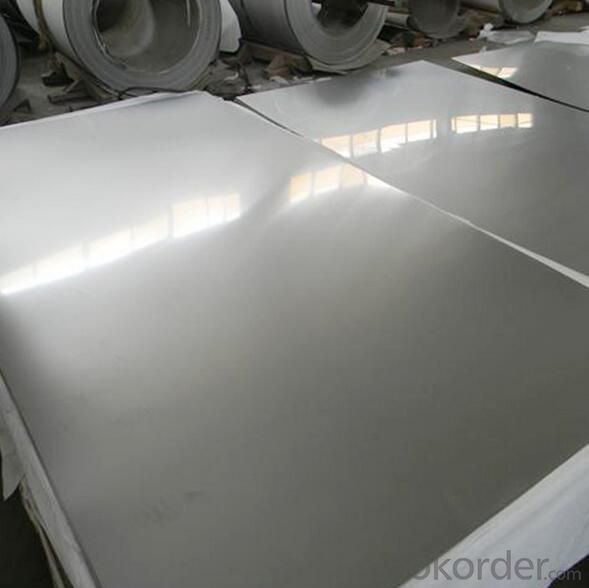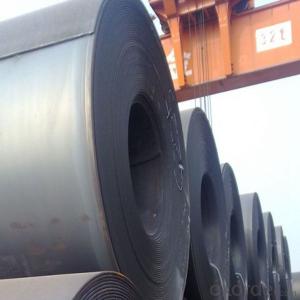Hot Rolled Plate Steel JIS SS400 Made In China
- Loading Port:
- Tianjin
- Payment Terms:
- TT OR LC
- Min Order Qty:
- 50 m.t.
- Supply Capability:
- 10000 m.t./month
OKorder Service Pledge
OKorder Financial Service
You Might Also Like
Item specifice
DESCRIPTION:
GRADE: SS400, ASTM A36, A572, ST37,ST52, Q195, Q215, Q235,Q345, S235JR etc.
STANDARD: GB/T709-2006, ASTM A36, JIS G3101, DIN EN 10025, SAE 1045, ASTM A570
SPEC: 1)Width: 600-2500mm or 1000,1050,1250,1500,1800,2000mm
2)Thickness:1.5mm-200mm or as customers’ special requirements;
3)Length: 2-12m or as customers’ special requirements
Product | carbon steel plate price per ton |
Place of origin | Tianjin,China mainland |
MOQ | 25 tons |
Thickness | 1mm-200mm |
Width | 1000mm-3000mm |
Length | 1000mm-2000mm |
Application | widely |
Standard | AISI,ASTM,BS,DIN,JIS,GB,etc |
Grade | A572,A573,A633,A678,A709,A710,G3101,G3136,etc |
Tpye | Steel plate |
Surfacing | Coated |
Productive Technology | Hot Rolled & Cold Rolled |
Price | FOB USD 500-900 per ton |
Port | TIANJIN,SHANGHAI |
Payment Terms | L/C,T/T,Western Union,MoneyGram |
Product Ability | 1000 tons per month |
Delivery | 10 days after deposit or according to customers' quantity |
Packing | standard seaworthy export packing or as the request of customers |
PACKING:
1.Big thickness:by bulk vessel
2.Small thickness:packed by steel strips and shipped by container
3.According to the requirements of customers'
TRADE TERMS :FOB, CFR, CIF
DETAILED PICTURES FOR STEEL COILS


FAQ
Q:How to order?
A: Please send us your purchase order by email or fax .or you can ask us to send you a proforma invoice for your order .We need to know the following information for your order.
1) Shipping information-company name, street address, phone number, fax number, destination sea port
2) Product information – Quantity, Specification (steel type, thickness, width, surface finish)
3) Delivery time required
4) Forwarder's contact details if there's any in China
- Q:How is the quality of steel sheets determined?
- Several factors and tests determine the quality of steel sheets. The chemical composition of the steel is a primary factor, including the presence and percentage of elements such as carbon, manganese, silicon, and alloying elements like chromium, nickel, and molybdenum. The specific composition impacts the steel's strength, durability, and resistance to corrosion. The mechanical properties of the steel are also important, assessed through tests like tensile strength, yield strength, elongation, hardness, and impact resistance. These tests determine the steel's ability to withstand forces and deformation without failure. Surface quality plays a crucial role as well. The surface must be defect-free, without cracks, scratches, pits, or any irregularities that could affect performance or appearance. Thickness and uniformity are crucial factors too. Thickness is measured using methods like ultrasonic gauges or micrometers to ensure compliance with specifications. Deviations from the required thickness can impact structural integrity and performance. Weldability, formability, and machinability are also tested, determining suitability for specific applications. These tests evaluate the steel's behavior during fabrication processes like welding, bending, or machining. Overall, the quality of steel sheets is determined through a comprehensive evaluation of their chemical composition, mechanical properties, surface quality, thickness, and other performance characteristics. These assessments ensure compliance with standards and suitability for intended applications.
- Q:Are steel sheets available in different textures?
- Yes, steel sheets are available in different textures. Different finishes such as smooth, brushed, embossed, or patterned can be applied to steel sheets to create a variety of textures.
- Q:How are steel sheets coated for corrosion resistance?
- Galvanization is a common technique for protecting steel sheets from corrosion. It involves adding a layer of zinc to the surface of the steel sheet. There are two ways to do this: hot-dip galvanization and electro-galvanization. During hot-dip galvanization, the steel sheet is dipped into a bath of molten zinc. The zinc adheres to the steel through a metallurgical reaction. This creates a protective barrier that prevents moisture and oxygen from reaching the steel, thus stopping corrosion. Electro-galvanization, on the other hand, uses an electric current. The steel sheet is placed in a zinc electrolyte solution, and the electric current causes the zinc ions to be attracted to the steel surface. This forms a thin layer of zinc coating. This method is usually used for thinner steel sheets or when a precise coating thickness is needed. Both hot-dip galvanization and electro-galvanization effectively protect steel sheets from corrosion. The zinc coating acts as a sacrificial layer, meaning it corrodes before the steel underneath. This prolongs the lifespan of the steel sheet and prevents rust. Additionally, the zinc coating can also provide a decorative finish, making it suitable for practical and aesthetic purposes. In conclusion, galvanization is a widely used and effective method for enhancing the corrosion resistance and durability of steel sheets.
- Q:How do steel sheets perform in terms of dimensional stability?
- Steel sheets are renowned for their remarkable dimensional stability, which renders them highly resistant to alterations in size or shape caused by external forces or temperature fluctuations. The inherent strength and rigidity of steel enable it to retain its form and dimensions over prolonged periods. Moreover, steel sheets exhibit low thermal expansion coefficients, resulting in minimal expansion and contraction with temperature variations. This characteristic further amplifies their dimensional stability, rendering them ideal for applications that demand precise dimensions and consistent performance. Given their dependable dimensional stability, steel sheets find extensive utilization across diverse industries, such as construction, automotive, and manufacturing.
- Q:What is the difference between a brushed and etched steel sheet?
- A brushed steel sheet and an etched steel sheet are both types of metal sheets that have undergone different surface treatments, resulting in distinct appearances and characteristics. A brushed steel sheet is created by brushing the surface of the steel with an abrasive material, usually a wire brush or sandpaper. This process creates a textured pattern of fine lines or scratches on the surface of the steel. The purpose of brushing is primarily to enhance the aesthetic appeal of the steel sheet, giving it a satin-like finish. Brushed steel is often used in architectural and design applications where a sleek and contemporary look is desired. It is also commonly used in kitchen appliances and automotive parts due to its resistance to fingerprints and scratches. On the other hand, an etched steel sheet is produced by a chemical or acid etching process. This involves applying an acid-resistant material, such as a resist or a stencil, onto the steel surface and then exposing it to an acid solution. The acid eats away at the exposed parts of the steel, creating a pattern or design. Etching is used to achieve intricate and detailed designs on steel sheets, making it popular in industries such as signage, jewelry, and art. The etched patterns can range from simple geometric shapes to elaborate images or text. In summary, the main difference between a brushed and etched steel sheet lies in the method used to achieve their respective surface textures. Brushing results in a consistent pattern of fine lines, creating a satin-like finish for aesthetic purposes. Etching, on the other hand, involves a chemical process that creates detailed and intricate designs on the steel surface.
- Q:Can steel sheets be used for decorative purposes?
- Yes, steel sheets can definitely be used for decorative purposes. They can be fabricated and shaped into various designs, patterns, and finishes, making them a versatile choice for architectural and interior applications. Steel sheets can add a sleek and modern aesthetic to spaces, whether used as wall cladding, partitions, ceilings, or furniture. Additionally, their durability and resistance to corrosion make them suitable for both indoor and outdoor decorative elements.
- Q:Can steel sheets be used for structural beams?
- No, steel sheets cannot be used for structural beams. Structural beams require a specific shape and design to support heavy loads and distribute weight effectively, which cannot be achieved with flat steel sheets.
- Q:Can steel sheets be used for interior wall applications?
- Yes, steel sheets can be used for interior wall applications. Steel sheets are strong, durable, and fire-resistant, making them suitable for use in various indoor settings. They can be installed as decorative panels or as a base material for wall cladding systems. Additionally, steel sheets offer benefits such as easy maintenance, excellent sound insulation, and the ability to withstand moisture and humidity.
- Q:What is the difference between zinc-coated and zinc-aluminum coated steel sheets?
- Zinc-coated steel sheets are made by applying a layer of pure zinc onto the surface of the steel through a process called galvanization. On the other hand, zinc-aluminum coated steel sheets are created by combining zinc and aluminum in a specific ratio before applying it to the steel surface. The addition of aluminum enhances the corrosion resistance and durability of the coating compared to pure zinc-coated sheets.
- Q:Can steel sheets be used for solar panel mounting?
- Yes, steel sheets can be used for solar panel mounting. Steel is a strong and durable material that can provide a stable support structure for solar panels. It has the necessary strength to withstand the weight of the panels, as well as the external forces such as wind and snow loads. Additionally, steel sheets can be easily fabricated and customized to meet the specific requirements of the solar panel installation.
1. Manufacturer Overview |
|
|---|---|
| Location | |
| Year Established | |
| Annual Output Value | |
| Main Markets | |
| Company Certifications | |
2. Manufacturer Certificates |
|
|---|---|
| a) Certification Name | |
| Range | |
| Reference | |
| Validity Period | |
3. Manufacturer Capability |
|
|---|---|
| a)Trade Capacity | |
| Nearest Port | |
| Export Percentage | |
| No.of Employees in Trade Department | |
| Language Spoken: | |
| b)Factory Information | |
| Factory Size: | |
| No. of Production Lines | |
| Contract Manufacturing | |
| Product Price Range | |
Send your message to us
Hot Rolled Plate Steel JIS SS400 Made In China
- Loading Port:
- Tianjin
- Payment Terms:
- TT OR LC
- Min Order Qty:
- 50 m.t.
- Supply Capability:
- 10000 m.t./month
OKorder Service Pledge
OKorder Financial Service
Similar products
New products
Hot products
Related keywords
































